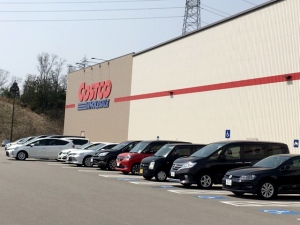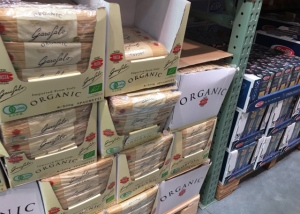There’s a ton of Japanese language applications on the market today. Are any of them any good? It’s hard to tell without downloading, installing and signing up for some kind of account. I took a look at a few of them and give you some thoughts here today. With minimal time for study, I’ve been looking for something I can open up from time to time when waiting in line, or elsewhere with a spare moment, and learn a few new words. So I judged these apps with a rather specific search criteria.
- I want to be able to be able to jump ahead to my current level (intermediate somewhere?)
- I want to get a full idea of the application from the FREE trial, without paying up-front
- I want the application to be interesting actually work – making it worth my time investment
The applications which I took out for a test drive were:
DUOLINGO
At first glance Duolingo didn’t allow me to do much of anything. But by providing them my email address and registering (free) it unlocked some decent trial ability. It quizzes you using a variety of grammar, reading, matching and translating exercises. It does let you “placement  test” in the beginning, and skips (apparently) a number of activities if you do well. The graphics and interface feel friendly and logical. They occasionally ask you to sign up for a 7 day free trial, and hit you with ad’s but it doesn’t prevent a nice trial experience. It’s all around a solid little app. It does feel a little bit like they are trying too hard to “gamify” the experience. To me, I don’t want to play a game. I just want to learn. But I get it – everyone is different, and some kids want that stuff I guess. The only downside for me is that it still felt rather basic to me in the beginning. Lots of “match the hiragana to the romanji” or “match the word to sound” kind of activities. I was pleased to see that there is a learning TIPS/GOALS button for each lesson, and that you can TEST UP/OUT of each category. This is big for me because I don’t want to waste time rehashing things I’ve already worked hard to learn. I also found it nice that their website interface was just as clean and simple (if not better) than the mobile App. I give it a 3.5 out of 5 stars.
test” in the beginning, and skips (apparently) a number of activities if you do well. The graphics and interface feel friendly and logical. They occasionally ask you to sign up for a 7 day free trial, and hit you with ad’s but it doesn’t prevent a nice trial experience. It’s all around a solid little app. It does feel a little bit like they are trying too hard to “gamify” the experience. To me, I don’t want to play a game. I just want to learn. But I get it – everyone is different, and some kids want that stuff I guess. The only downside for me is that it still felt rather basic to me in the beginning. Lots of “match the hiragana to the romanji” or “match the word to sound” kind of activities. I was pleased to see that there is a learning TIPS/GOALS button for each lesson, and that you can TEST UP/OUT of each category. This is big for me because I don’t want to waste time rehashing things I’ve already worked hard to learn. I also found it nice that their website interface was just as clean and simple (if not better) than the mobile App. I give it a 3.5 out of 5 stars. 



LINGODEER
Are these apps related? Because they seem rather similar to me. I do like the somewhat cleaner, less gamified look of LingoDeer. LingoDeer provides a variety of grammar exercises and reading challenges, reinforced by stories that use  audio/recording and pleasant graphics. The topics they offer you are all very relevant to daily life. In the App I ran into some problems. They seem to block you from anything more than an introductory lesson. The lessons appear as if you can open them – then it hits you with a road block saying you must sign up. When I logged in on the website it was much clearer, and I saw that I could “TEST OUT” of the first sections which I promptly did ! But this didn’t really open up anything new to explore, it still only gave me a glimpse of the App. I’ll give it 2.5 out of 5 stars because I feel like I’ve invested too much time in something that isn’t giving me a full idea of the App’s ability. Maybe I’ll come back to it again someday. But why would I when other Apps are less restrictive?
audio/recording and pleasant graphics. The topics they offer you are all very relevant to daily life. In the App I ran into some problems. They seem to block you from anything more than an introductory lesson. The lessons appear as if you can open them – then it hits you with a road block saying you must sign up. When I logged in on the website it was much clearer, and I saw that I could “TEST OUT” of the first sections which I promptly did ! But this didn’t really open up anything new to explore, it still only gave me a glimpse of the App. I’ll give it 2.5 out of 5 stars because I feel like I’ve invested too much time in something that isn’t giving me a full idea of the App’s ability. Maybe I’ll come back to it again someday. But why would I when other Apps are less restrictive? 


LINGQ
LingQ works very different than the previous apps. It offers you various stories to read and listen to, allowing you to highlight words you don’t know (LingQ’s) and assign the definition which most  like. These words you can be quizzed on and study later. As the words become more familiar you can assign a degree of understanding to them and eventually remove them from your LinQ’s. The learning experience here seems much more narrow or focused, but that’s not a bad thing. The App’s trial experience is a bit of a tease, but gives you a basic idea. The website, like the others seems to allow more exploring. He fact that you can select readings that match your current ability is highly appealing to me. So for me this is my top pick. 4 out of 5 stars.
like. These words you can be quizzed on and study later. As the words become more familiar you can assign a degree of understanding to them and eventually remove them from your LinQ’s. The learning experience here seems much more narrow or focused, but that’s not a bad thing. The App’s trial experience is a bit of a tease, but gives you a basic idea. The website, like the others seems to allow more exploring. He fact that you can select readings that match your current ability is highly appealing to me. So for me this is my top pick. 4 out of 5 stars. 



CONCLUSION:
I haven’t found that addictive learning App which has captured my love yet. Oh well. The search continues. And I did find at least one worth further examination. As always, whatever works for you – is in fact the best.
A NOTE ABOUT BUGS:
It should be noted that I found problems with multiple Apps when it came to accessing my account on the website, versus mobile. SO I would highly recommend confirming that you have the same account working on both your phone app and computer website interface before you begin your learning. Why use the website version at all you ask? I found that it was actually a bit easier/more fun to use the website when actually sitting in front of a computer anyway.
BONUS APP MENTION:
And just because it has saved me on so many occasions, I should probably throw in a mention for the best FREE Japanese Language Dictionary out there – “Imiwa?” (not a sponsor). www.imiwaapp.com While this app takes up a chunk of space on your phone, the instant access to translations, word definitions, examples, kanji and even stroke order have been indispensable! While not technically a learning App – I can’t recommend it enough.
Thank you for reading and following this blog. Check out my post about the recent harvest of the rice fields.



 Tortilla chips, salsa, tequila, taco seasoning, frozen quesadillas and tortillas were all mentioned multiple times. So it’s good to see expats keeping the Mexican fiesta alive even in the land of the rising sun!
Tortilla chips, salsa, tequila, taco seasoning, frozen quesadillas and tortillas were all mentioned multiple times. So it’s good to see expats keeping the Mexican fiesta alive even in the land of the rising sun! But your spreadable desires didn’t stop there, as Nutella was also mentioned multiple times.
But your spreadable desires didn’t stop there, as Nutella was also mentioned multiple times.







 Relationships:
Relationships:

















